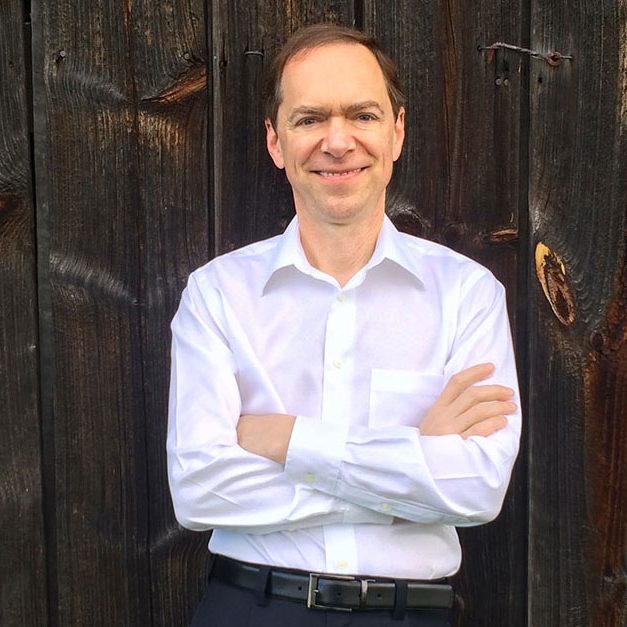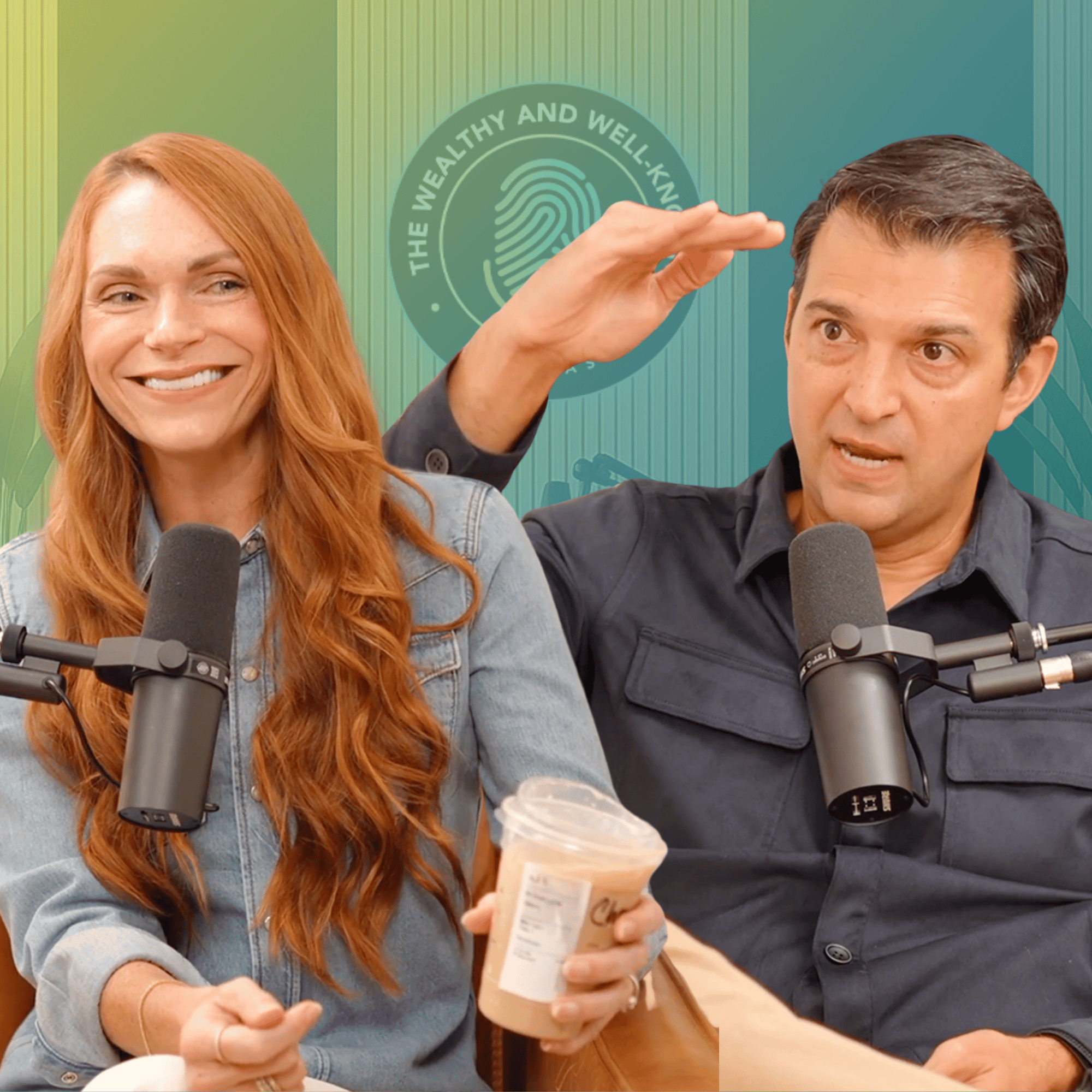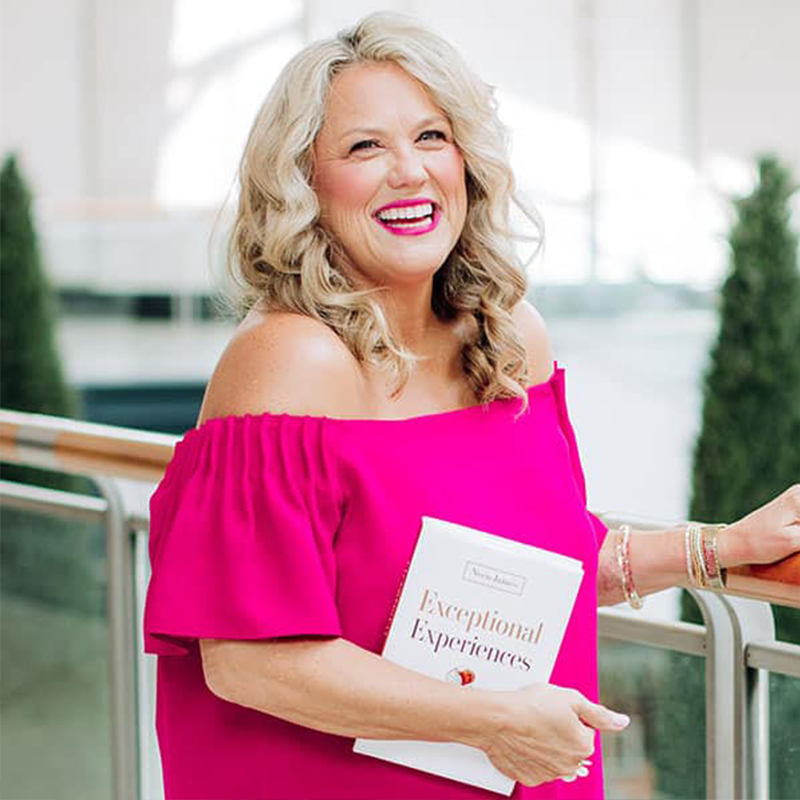RV (00:07):
Hey, brand builder, Rory Vaden here. Thank you so much for taking the time to check out this interview as always, it’s our honor to provide it to you for free and wanted to let you know there’s no big sales pitch or anything coming at the end. However, if you are someone who is looking to build and monetize your personal brand, we would love to talk to you and get to know you a little bit and hear about some of your dreams and visions and share with you a little bit about what we’re up to see if we might be a fit. So if you’re interested in a free strategy call with someone from our team, we would love to hear from you. You can do that at brand builders, group.com/pod call brand builders, group.com/pod call. We hope to talk to you soon.
RV (00:54):
I would consider my first major media appearance ever to have been in an outlet called networking times magazine. And I got, I want to say I was maybe 22 years old when I got a full, like three page spread story that was written about me. That was huge because it was huge for my confidence. We got some great reach out of the article, and then we included screenshots of that article in the book proposal that we ended up using to get our, our first book deal for take the stairs. Well that the writer of that article is the man that you are about to meet today. His name is John David Mann, and so we had been friends literally since the beginning of my career. And then he Koa, he he’s written about 30 books. They’ve been translated into 35 languages. They’ve sold millions of copies.
RV (01:50):
I still to this day, my, my favorite book and John has written so many since then, but the go giver is my favorite book. He coauthored that with my friend Bob Burg, and that book has just been one of the top five books of all time for me that I’ve ever read. John’s written several fables and just released his first fiction book, which is pretty fascinating. We’ll hear about that. And he also has a new ebook out that’s exclusively only as an ebook called how to write good or at least good, or, and so anyways, my old friend is really great to have you, I can’t wait to pick your brain on some of the writing secrets. Thanks for making time for us.
JDM (02:39):
It’s great. It’s a cliche to say, but it has been too long, but the time is just right. So yeah, good to be here. Good to see you.
RV (02:46):
And I feel like, you know, we, we kind of have touched base every couple years for now, like 20 years and it’s like a few, a few years ago by, and then it’s like, you got a new book or we’re doing something and you know, tell me about so I want to hear just about the fiction book quickly. I mean, I wanna, I wanna understand your writing process, or maybe you can merge these together. What I’m really interested in knowing you know, this podcast is all for personal brands. A lot of what we talk about is digital marketing and branding and positioning and messaging. And we actually don’t talk that much about writing, like at its true core, writing a story, creating content, and you’ve done this non-fiction, you’ve done fables now you’ve done fiction. And I, you know, my only goal today is to try to like steal all your secrets about your writing process for F to get, to get those out of you for free. But you, you just did your first fiction book. So I’m curious, how, why did you do that? How is that different from the other stuff that you have done and like, what are some of the lessons that have come out out of that experience? Yeah.
JDM (03:56):
You know, it’s in the course of all these books, you know, as you know, this, there’s been a lot of different kinds of books. I’ve written a handful of memoirs, which is interesting. It’s like basically telling somebody else, tell me your story and I will make it into a book. And so when you read a memoir, your you’re, you’re taking an existing story. That’s reality that really happened to this person. Right. But you’re still trying to find the story in it. So in a sense, you’re taking that person’s story and you’re rewriting it as you’re not making stuff up, but you’re choosing stuff. You’re framing stuff. It’s like making a biopic. If you’re a movie director. Right. And you’re going to write about, you know Freddie mercury are going to write about you know, Gandhi or whoever you’re gonna write about what events do you choose?
JDM (04:42):
How do you string them together? So you’re fashioning a story and you know, about writing in general. My belief is that no matter what you’re writing, whether you’re writing somebody else’s memoir or a straight non-fiction book, like some of the books I’ve done that are sort of business nonfiction, concept books, or a parable, a fable clearly, or a novel like this was, it just came out or Hey, if you’re writing a blog post or you’re writing a Facebook post or a LinkedIn article, or you’re writing a promotional piece, you’re telling a story, you’ve got a beginning, middle and end. You’re, you’re creating an arc, you’re creating some suspense, you’re creating some interests, you’re creating some intrigue and you’re answering some questions or at least you’re posing some questions. It’s all kind of the same thing. I mean, they’re really different, really different forms, but there’s this, there’s this basic sort of storytelling, DNA imprint.
JDM (05:41):
We’ve all got inside us, huddled around a campfire or huddled around, you know, in a cave however long ago hearing about the saber tooth tiger that one of us killed. We’ve all still kind of got this. Tell me what happened next gene in us. And that’s what expresses itself in story in any medium. So yeah, the novel was wild and completely different experience in one sense. You know, as I think it was telling you before we started that, that I feel like I’ve been climbing these lovely little Hills for 15 years. And all of a sudden I’m like with an oxygen mask on the top of Mount Everest, climbing this novel, say, how do I get up here? And how do I get down, especially how do I get down without breaking my neck? Cause 400 plus page novel. That sounds, that’s a thriller on top of it, which means you can’t let up the tension for a moment. You can’t let it dispense for a moment. You can’t let up the pace for him keeping someone’s attention. So they’re turning pages for 460 pages. It’s a whole different challenge and a whole different world than writing the golden giver which has to do the same thing. But in this little tiny form, it’s like the Go-Giver is like a miniature.
RV (07:00):
I know in a lot of your books are so short, like, like the fables there, you can sit down and read them in one sitting like 400 pages is it’s totally different.
JDM (07:10):
Yeah, yeah, yeah. It’s totally different. By the way, out of all the writing I’ve done, I’ve come to a point where the two things I love to do most are the, are the fables and the novels. So it’s, that’s like, that’s, that’s my, that’s my career, Catherine. I love those parables. I love taking a life message or, or a life principle and spinning that into a story that feels real, that feels compelling, you know, about people that you care come to care about. And if a parable, you know, I say it in the book, how to write good. I say a parables are really easy to write poorly.
RV (07:50):
Yeah. I mean that, like, to me, it freaks me out because you know, I just think the power of a parable, like I think of AIJ. So my wife my business partner, this, our CEO of brand builders group, she, you know, she always makes fun of me for reading boring business books. She calls them boring business books. And, and she loves, she loves fables cause she gets hooked on the story and she, you know, she, she loves to read fiction. And so the, her, her favorite, you know, books, business books are fables and some of mine are too, you know, I think of like the five dysfunctions of a team from pat Lensioni. And then of course you guys did a whole bunch in the, in the Go-Giver series. But like, so can you so here’s my question. Here’s what I don’t think I’m very good at. And I think a lot of people aren’t good at both in writing and speaking is how do you create suspense? Like you just mentioned that for 400 pages, you can’t let off the gas for a second. How do you, like, what is suspense? How do you create it? And then like, how do you know how to write it?
JDM (09:07):
Yeah, I think that’s, that’s a great question. And I think that you know, contact kind of thinking, I’m kind of framing my, my thoughts in the parable space at the moment, because there’s the Go-Giver books. I had the opportunity to write the sequel to who moved my cheese, which was a experience on the other end of the spectrum, right? Cause steal fear. The novel is like 450 page thriller about a serial killer on an aircraft carrier at a wholly different thing who moved my cheese is written at the level of a child it’s Spencer Johnson wrote children’s books. And, and he actually wrote literally children’s books in addition to his adult books. And so to write in the style of Spencer Johnson and write a SQL to who moved my cheese, it’s called out of the maze, was like, I had to, you know, put your brain into that, into that container.
JDM (10:00):
But there’s still suspense in there. And the suspense of the Go-Giver because there’s, you know, in the Go-Giver for those of you who haven’t read it, there’s this character called the connector and you don’t know who he is. And there’s this character called the Friday guests and you don’t know who he is and Joe has got this problem and you can’t imagine how he’s going to solve it. And there, there are these various questions that you don’t really see how they’re going to resolve themselves, but they do the, the, the requirement for the ending of a great mystery or a great suspense novel. Even the book, I would say like the Go-Giver requirement is that when you reach the end, you go, wow, I never saw that coming. And yet the moment you see it, you go, of course, that had to happen. It has to be inevitable, but a complete surprise at the same time, if it’s a surprise and you go, like Yvette came out of left field, I have no idea how that happened.
JDM (10:58):
That’s not fair. You broke the rules of the game. It has to be believable and inevitable and yet I didn’t see it coming. So, you know, actually our lives are like that. I mean, my marriage is like that. I’m, I’m married to my best friend, this amazing woman. And I meeting her was a complete surprise. It’s not something I ever could have planned, you know, writing the Go-Giver with Bob Berg was a complete surprise. It wasn’t something I sought. I’m getting off topic there, but so how do you create suspense? It’s kind of the opposite of giving a lecture or, or lecturing in the worst sense. You’re lecturing in the sense of, of just talking at people. Obviously if you give a great public talk, you don’t do this. You tell stories in a great public talk, but when you’re just lecturing at people, when you’re just telling people something, when you’re just talking at, let’s say you’re mansplaining, I’ll use current terminology.
JDM (11:58):
Like that’s, that’s this awful form of communication where you’re not listening. You’re just talking. Suspense is created by questions. What creates suspenses you pose questions. And not only do you not know the answer, but you can’t even imagine what the answer is. Like, where is this going? Like, where did that come from? What, you know, the classic thriller is kind of a, who done it, you know who somebody’s got dead, it’s murder in there. So who, who killed the person, but you don’t need murder to have mystery. There’s mystery in the seven habits of highly effective people, because the moment you see the title, you go, wow, what are those? How well does Stephen Covey unwrap those, those seven habits? The stories he tells that reveal them. It’s not a super suspenseful book, but he unwraps beautifully. So suspense is about setting up a question and then unwrapping the answer piece by piece in a way that every little morsel is delicious and every little morsel leaves you wanting more. That’s I don’t know if that’s a good way of describing it, but that’s the best way I can think of. I
RV (13:16):
Know. Well, I know it’s, it’s, it’s just hard, you know, I think of storytelling and there’s like so many things, it’s this beautiful blend of both science and art, right? Like there’s structure, there’s a lot of structure to it. And I think you know, a lot of it is artistic even, even to hear you describe it, I mean, to go, okay, I know I need to create an ending that is inevitable, but unpredictable, I’m gonna, that’s how I captured what you were saying. Right. It’s it’s like, of course it had to end that way, but I didn’t see that coming. And then you go, okay, I have to create questions along the way. And so, you know, do you just create questions through characters or like what, what if it is a non-fiction type of writing? I mean, obviously if it’s a parable, which I, which maybe is what you’re saying, like, you you’ve really come around to enjoying payables and novels, because you’ve got, I presume that you’ve got these characters and these kinds of dynamics that can create questions without just kind of posing. Well, I was on a, I was on a mission to understand, you know, the answer to this problem. And so I spent five years researching it and here’s what I found is that, that kind of thing. Yeah.
JDM (14:28):
And if you look at I mean, if you look at great non-fiction writing and I’ll give you an example Malcolm Gladwell, you take a book by blink or, or a book, the tipping point, or, you know, he’s got so many of these that are there along the same lines where they take the hero of the story is not a person. The hero of a story is a concept. It’s like an idea, like the tipping point, it’s how little things make a big impact. That isn’t the exact word, but something like that. Right? So he takes an idea and he unwraps it, using a lot of stories. He does exactly what you do when you’re on stage or what any good speaker does when you’re on stage. You have an idea you want to convey to your audience and you convey it by, by stringing stories together, little vignettes from your life or other, other people’s lives.
JDM (15:19):
Because when you can, you can, you can frame a principle around real people or real characters. It comes to life for people. So Aesop could have said, you know, if you’re slow and steady, if you’re careful what you’re doing, you’re gonna, you’re going to get there sooner, but people will go. Yeah, actually, that’s great. So instead he creates this hair and this tortoise, and now you go, well, who’s going to win the race. I think the hair is going to win. It’s obvious. Right. But it must be not him, but it must be the tortoise because he’s the slow one. But how is that going to work? You know, it’s like, it’s interesting. Suddenly that’s an example of a story at the parables in the Bible, in the new Testament are great examples of teaching tools, teaching stories that are, that, that make principles come to life with characters.
JDM (16:01):
But so back to your question for me, the answer is, yes, you said, do you create these questions through characters? I do. I do. I set up, you know, for me, whether I’m writing a novel or a parable, there’s a basic idea of kind of the setup. Like when Bob and I started working on the Go-Giver, he already had the title. We kind of knew the point of the story. Not kind of, we knew the point of the story. The point of the story was if you put your focus on others, more than yourself, on what you can provide in value, as opposed to what you can get in a value in any situation, your life will be better. That was the point, oh, we could have done the Go-Giver in a sentence and then a sentence. Yeah, that’s it. The point of my novel steal fear is a disgrace Navy seal stocks, a serial killer on an aircraft carrier in the middle of the Pacific ocean.
JDM (17:12):
And obviously you figure the point is going to be, he gets caught. We think, we hope you can kind of tell the story in a sentence. But then you, you create these characters and then you, you just breathe enough life into them so that they feel real. And then you see what happens and you start asking the questions like, well, what happens when he goes here? What happens when he goes there? Joe is beginning of the Go-Giver has a problem. What’s his problem. He’s in a business he’s frustrated. What’s, you’re frustrated about. I don’t know. We didn’t know. So you start asking questions. The beauty of, of doing that in both a parable and a novel is that I, the writer don’t necessarily know the answers. It’s like, I work to figure out what the answers are. I work to follow the story and see where’s this going? And so when, when the reader, when you, the reader start to follow the breadcrumbs from page to page, I was doing the same thing. You were a few months, I didn’t know either when
RV (18:17):
You have the whole arc mapped out, like you kind of know the ultimate destination, like you’re saying like the premise that he will have the book, right? Like you kind of know, okay, this is the very end. And then you kind of go, okay, let’s, here’s a couple of characters. And then, and then you just kind of like day by day, you go, what if this happened? What if that happened? Like how, how would these people interact? That’s right,
JDM (18:38):
Exactly what feels right. What seems, and I’ll give you a great example. There’s, you know, the Go-Giver has several books in the parable series and by the way, there’s a fourth one coming. We’ve got the, give her a leader that Go-Giver influencer, which I want to talk about for a sec. Cause it is an example. And then in the spring, we’re going to have the Go-Giver marriage, which my wife and my wife and I co-wrote this one. So we’re excited about that. But in the Go-Giver influencer, the third book, the basic premise of the book is it’s about seeing other people’s points of view. It’s like we could have called it. The Go-Giver negotiator. It’s about people who see things differently, turning an argument into a resolution, turning an opposition into an Alliance. That’s the basic thesis of the book. And so we start out with two characters who are in a tough negotiation and they’re basically opponents.
JDM (19:30):
And we knew that by the end of the book, there was going to be some really cool resolution that neither of them saw coming, but which would totally work. And the thing of it was neither of, neither of us saw it coming either. Like we didn’t know what that resolution was going to be. So it’s like we set up the situation, is it, I wonder how this is going to resolve. We knew what was going to happen at the end was going to resolve how, you know, we were discovering it in the process. So I think there’s, you mentioned earlier, there’s a balancing act. You have sort of the science and the art. There’s, there’s a structure side to writing and there’s kind of a flow side to writing and you’ll hear writers debate about whether you should use an outline or not. They call them plotters versus pantsers, plotters figure out a plot first.
JDM (20:21):
This is what James Patterson does figure out a plot. And then you kind of write the story. Pantsers like writing by the seat of your pants. Pantsers just start at page one and go, Stephen King says he’s a pantser. And I think this debate is a little specious because I really think that if you look got inside their brains, everyone’s doing a little bit of both or a mix of both. I know for me, I always have an outline, but it isn’t where it starts. This is by the way, true for a novel, a parable, it’s true for a blog post. It’s true for an article I’m going to write, I’ll have an outline, but I don’t, it’s not where I start. I start with just like an idea, a concept, a situation, a character, a piece of dialogue, whatever, from something that just as a spark and it’s always going back and forth between taking just random ideas and spontaneous writing stuff and kind of molding it into a structure and then taking the structure and saying, yeah, but then what happens over here? And then messing up again? So I go back and forth between structure and flow. I even have two different places in my, in my room where I, where I do it. I’m sitting at my structure place in my desk and over there in the corner, I can’t get over there in the corner. I have my overstuffed chair, which is where I sit with a pad of paper and a pen and just make stuff up. And I have no idea what’s coming.
RV (21:55):
So how do you get, how do you, well, maybe talk, talk to us about characters, right? Like how do you develop a character? Cause I, you know, like I’ve started watching I’ve started paying attention to this a lot in recent years because one of the things I realized is like, gosh, I have to become a better storyteller. Like to what you’re saying. I’ve realized if I want to get my points across more effectively, I have to become a better storyteller, which actually for me has been frustrating. Like I love the boring, just give me the information. Like I, and it’s hard because as a consumer, I actually do like that, but it’s, I think it’s very rare. Like people, they have to be engaged and entertained and you know, if you just deliver the punchline, it’s not punchy. If there isn’t that suspense or that conflict along the way, it doesn’t sink in. And then so I’m like, well, crap. I have to like, learn how to do this thing. I’m not naturally good at it. And I don’t really love, or didn’t really, I didn’t really love storytelling. And so, you know, like I think of, I think of one of our favorite shows as modern family. I mean, it is, it is our favorite show. We’ve watched it. Have you ever, have you ever seen the show
JDM (23:01):
Completely? Totally. Yes.
RV (23:03):
So we have seen every single episode in every season, every one of them we have seen at least at least six or seven times every single episode. And you know what I realized finally, after years now of watching the show is going, oh, there is a formula to this, which is basically each episode. They start with these characters who have very salient features. So each character has very distinct features. And then every episode they basically say, okay, what if we put these three characters together in these two characters together and these ones, and then go, what would happen if these extreme personalities got paired up in these different arrangements? And then I, and I kind of feel like, oh, that I think that maybe is how they’re, how they’re writing like a chemistry set. Yeah. Like I’m mixing these things together, but you know, so how do you develop characters? Where do you come up with these, you know, ideas? And if you’re just, you know, if you’re doing it, if you’re a pantser and you’re just kinda like letting it flow, how do you do it to where it doesn’t suck and isn’t boring. Yeah.
JDM (24:09):
So for me, by the way, I’m much more structure oriented than, than, than, you know, flow oriented. It’s kind of a very methodical nature. I come at it like a composer and I S you know, I was a composer before I was a writer and classical music was my training, my upbringing. And so I think like, like, you know, a symphonic composer which is a very structural thing. So a couple things about, about characters. First thing I want to say is the fact that you said you’re naturally suck at this is awesome. Because if, if you, if you come to something from a place of nothing naturally inclined to do it, you can become so great. Like, I’ll give you an example. I, I started doing these military books with Brandon Webb, my Navy seal friend. I know nothing about the military. It’s like writing a book in German when I don’t speak German.
JDM (24:57):
And I have to learn the language just to write the book. But, you know, there’s, there’s no one who loves the English language, like somebody who was brought up somewhere else who learns it as their second language. That was my dad’s case. He came from Germany and he like, no, he loved English, like no native American, whatever love. So that’s the first thing I don’t come up with these characters automatically. I’m not, I don’t consider myself a gifted at this naturally, like Stephen King just kind of shakes his arms and colorful characters, spill out. I’m not like that. So I’ll start out with a character, with a character. And by the way, one of my writing teachers says that before you start a novel, you spend weeks and weeks and weeks writing character profiles, where like you ask all these questions, you answer them all, and you, and you come to know this character, like better than, you know, your brother.
JDM (25:50):
Then you start the novel. I tried and I couldn’t really do it. And interesting when I S when I start a character, when I create a character, he’s kind of a, like a stereotype or a caricature at first. So like, you know, Joe and Pindar Joe is this, you know, struggling young business guy. And Pindar is this wise old mentor or in my novel, there’s this captain, the ship captain who a jerk he’s, he’s, he’s a, he’s an. And it was, it would have been so easy to make him like a cartoon villain.
JDM (26:28):
So then what I do is I do something very much like what you do in real life. I used to run a sales organization, and I had people who were terrified and making cold calls and terrified and making sales calls. And they would say, when I get, and they would say, when I get in the phone, it’s like, you know, I freeze up because I feel like, I don’t know. I I’ve got all this stuff, I want to say, but it feels can, that feels hollow. And so my thing was, when you get on the phone, ask yourself the question, who is this person I’m talking to? Yeah, you got your product or your service. You got your stuff, you got your pad, or you’ve got your, your, you know, all of that. That’s already in your head. So just let that go for a moment, ask the question, who is this person I’m talking to?
JDM (27:16):
Not like, what do they need so I can sell them. But just who are they? I’m just curious, be curious about the person and not, you can’t grill them like third degree. Where did you come from? Where’d you grow up? How many siblings do you have? But just be curious. That’s what it’s like with a character. Curiously, these characters, this guy is, is a jerk of a leader. He’s an aircraft carrier captain that is terrible leader. He doesn’t have any sympathy of risk people. He doesn’t talk to his people. No one really looks up to them. They just do, because they have to go that’s the position, but they don’t naturally because they think all things is a jerk. Okay. What is he most worried about? What concerns him most, when a problem comes up, how does he react? It’s like, I just get curious about asking questions and you see just like popping up little detail tales about somebody, the way they, the way they respond, the way they say certain, like catchphrases will come out or certain ways of talking will come out.
JDM (28:24):
And they start to come to life. It’s I still find it challenging for me. It’s not something I, I I’m, I come to naturally, so I have to work at it, which is good, because that means I have to make it happen. You know, that’s true with, with everything, right? Whether it’s a parable or it’s a novel or, or anything else, or for that matter, if I’m writing a like a principal, like I’m writing a blog post about, you know, leadership. Well, I say to them said, give me an example of that. I try to think of an event that’s happened in my life that somehow reflects that. And I think of the people in that event, I always ask myself questions. What does that look like when it actually happens? So that’s, you know, that’s, that’s kinda where it’s at in the novel.
JDM (29:13):
There are a lot of things that happen. There’s a lot of situations or characters. They were vaguely echoes of real characters and real just because that’s, you know, that’s where I went there. Well, I dipped into to start to make it the life. You’ll hear film actors, talk about how, in order to play this role, they had to excess this memory of their own, his own experience. Like in order to play this greeting father, they had to access when their dog died and how sad they were. And I used to think that’s so pretentious. That’s like actors speaking, Hollywood actors. That’s how they talk. But I, as a writer, I started realizing that’s really true. You know, when you want to write somebody, who’s grieving, you go find a place in your life where you’ve grieved and you remember that, and it kind of opens that door for you. And so I think the, the real skill to answer your question about where characters come from, it’s empathy, it’s all empathy. You tap your empathy. And that’s where I think stories and characters kind of that’s the wellspring that they come out of.
RV (30:23):
Wow. That is so good. That is so, so powerful. I think suspense, plot lines, being curious, characters, you know, coming from empathy really, really great stuff, John, I I just admire so much what you do and, and you’re truly an artist in the way. You’ve been able to apply it across so many different things. Where do you want people to go? Okay, you mentioned this book how to write good or at least good, or which is a, is an ebook that you have, or, you know, where, where do you want people, if they want to connect with you or people who are aspiring writers or just wanting to be better at the craft of writing how can they learn more about you?
JDM (31:06):
Yeah, it’s funny because the book itself grew out of podcasts and interviews, just like this conversations like this, where people would ask questions about writing and I’d come up with an answer and say, oh, I should write that down. I only meant to do a little like 12, 14, 18 page, little sort of ebook article. And it turned into a full fledged book. So I hear it is masquerading as a physical book. I’m doing it right now, as you said, just as an, as an ebook, it’s a free download on my website. I imagine someday I’ll really publish it. And it’ll be, it become a a real boy like Pinocchio, but right now there’s a new book that you can buy. You can get free on my site, which is just my name, John David mann.com. And you go to Johnny batman.com and you’ll see up there, you know, ebook free ebook, whatever that’s, that’s, that’s what this is. I love
RV (31:54):
That. I love that so much. Well, you know, thank you for the work that you put into this because your, your characters are delightful. And they’re everything that you just described there they’re dynamic. They are real, they are multi-dimensional, they, they are people that we have all met in real life, which makes sense, because there, there are people that you have met they’re based on those, and, you know, specifically the way that you weave a tale into you, you can take one simple principle. That is a sentence like it literally could be a tweet. And from that you extrapolate this, this beautiful, wonderful, entertaining, uplifting, curious page, turning, sorry, that’s just such a bit more, it’s just such a more enriching way to get to that destination and a more effective one too, you know? And so we really appreciate your work and we appreciate you very much sharing several of your secrets here with us for free.
JDM (32:56):
I certainly appreciate it too. I love being here. And I have to say, you know, in the balance between telling a story versus teaching a principle, either paranormal, you’re always doing both. It’s a tricky balance because in my mind, the story, the story has to always lead story has to be king because the principal only works with the story as king. I got to the end of steel, fear, the novel, and turned around, looked back and realized that it was teaching a leadership principle. It’s like, it’s a parable, it’s a leadership, parable disguised as a crime novel. My parable, my parable, I have it’s, you know, w we’ll never die, I guess. It’s like they don’t go away.
RV (33:32):
That is awesome. That’s awesome. Well, we wish you the best, my friend. Thanks for being here. And thanks for your support after all these years. Yeah, yeah, yeah. We’ll do it again. A couple of years away.

















